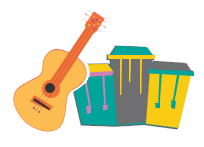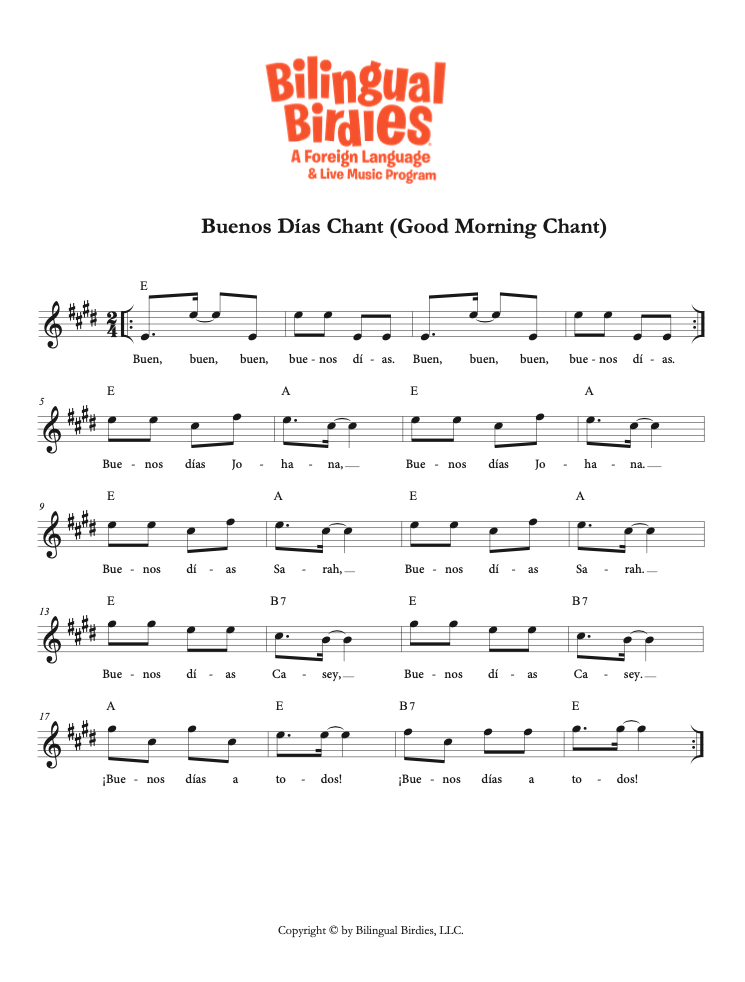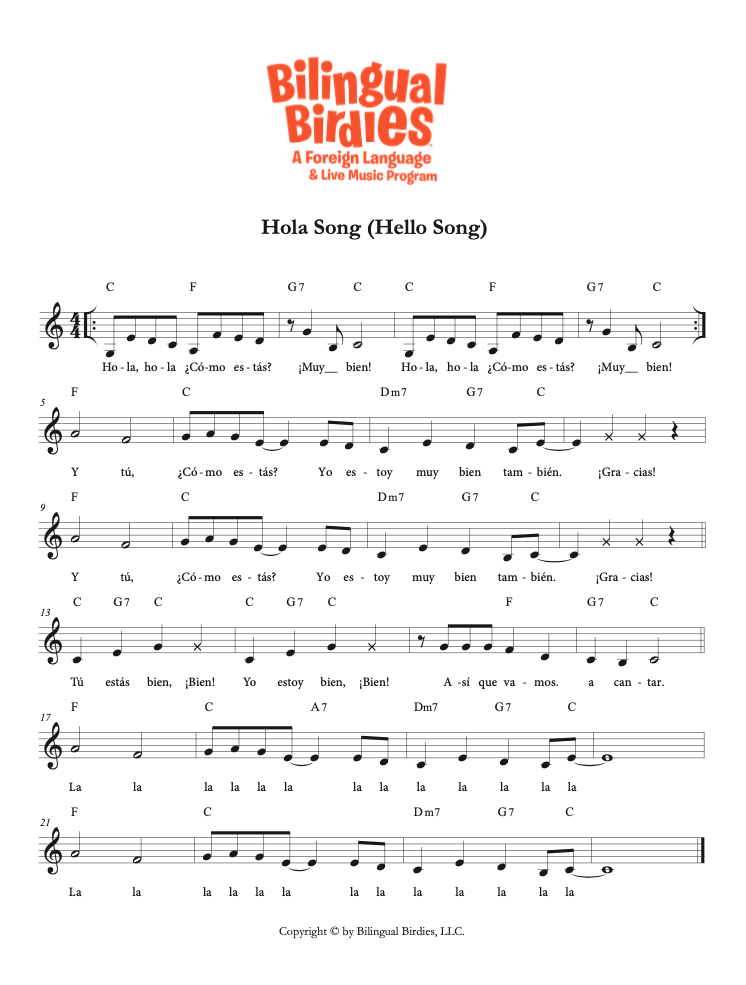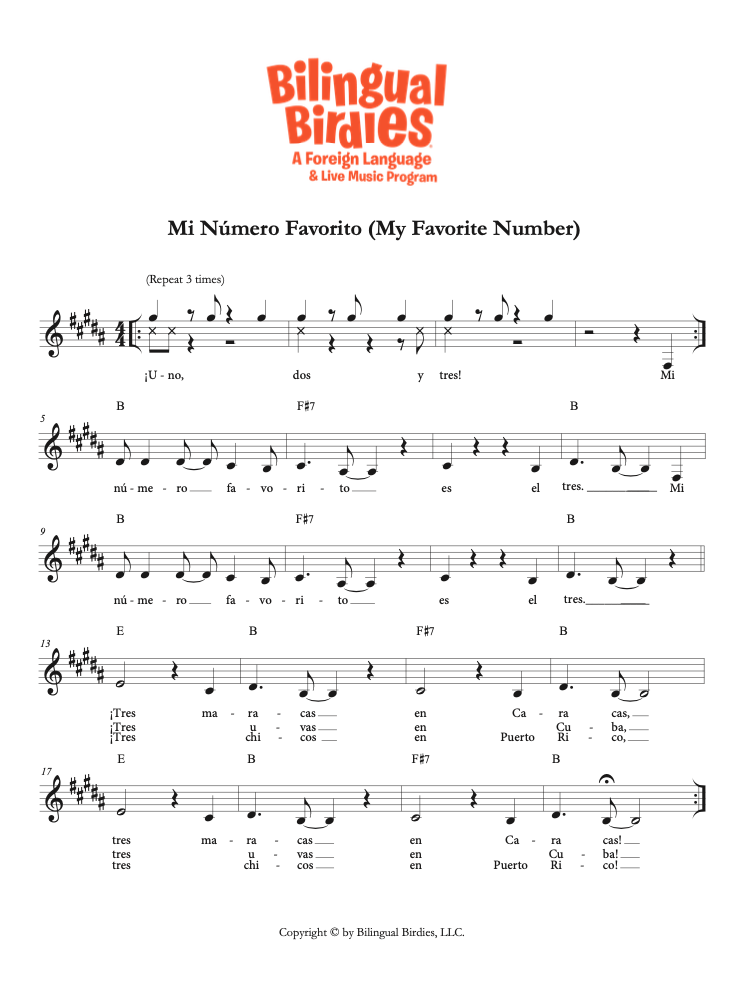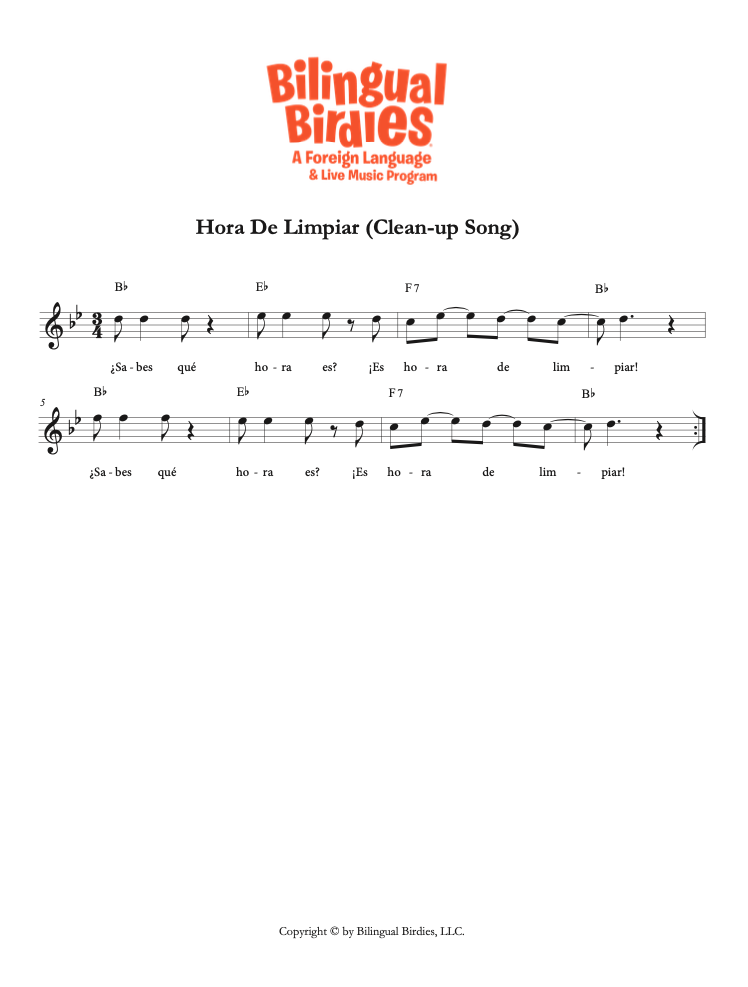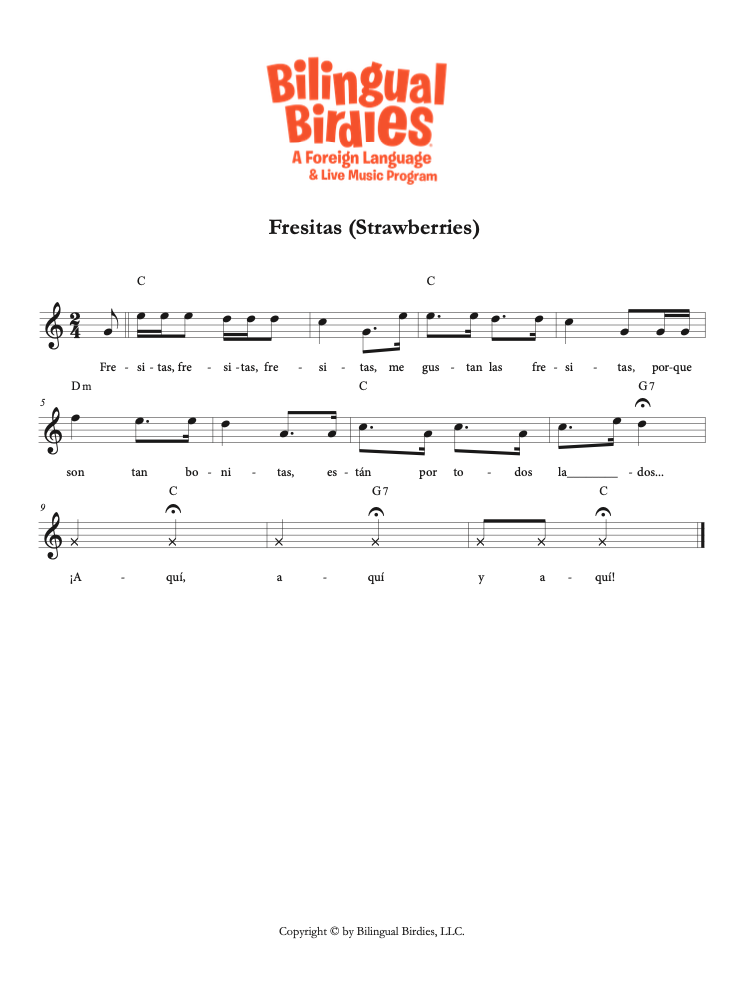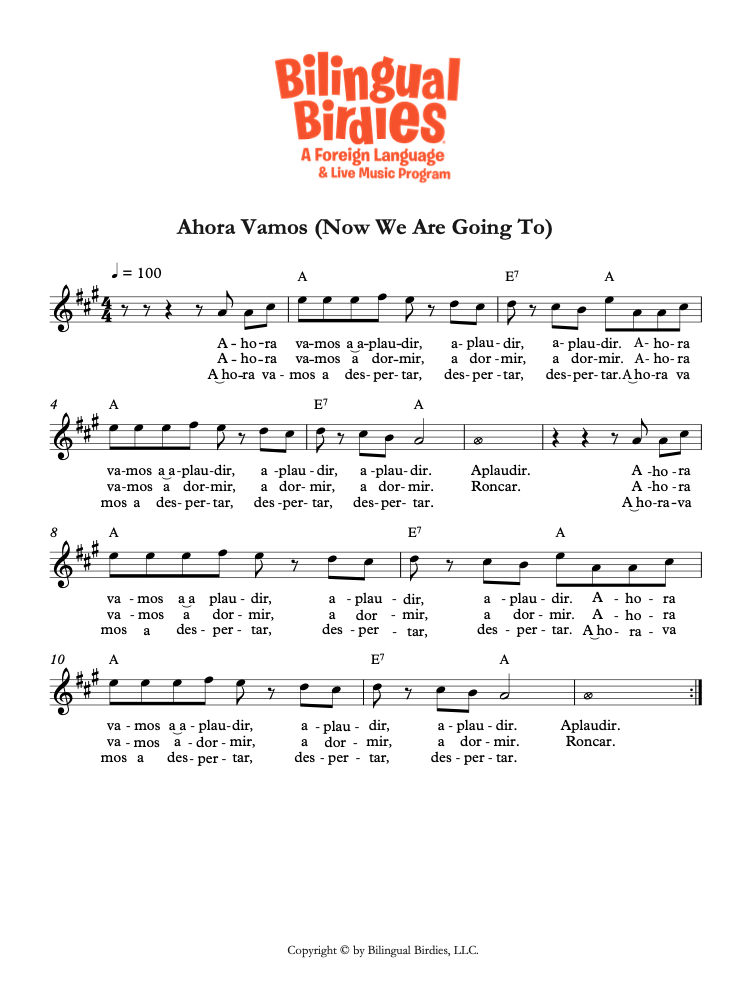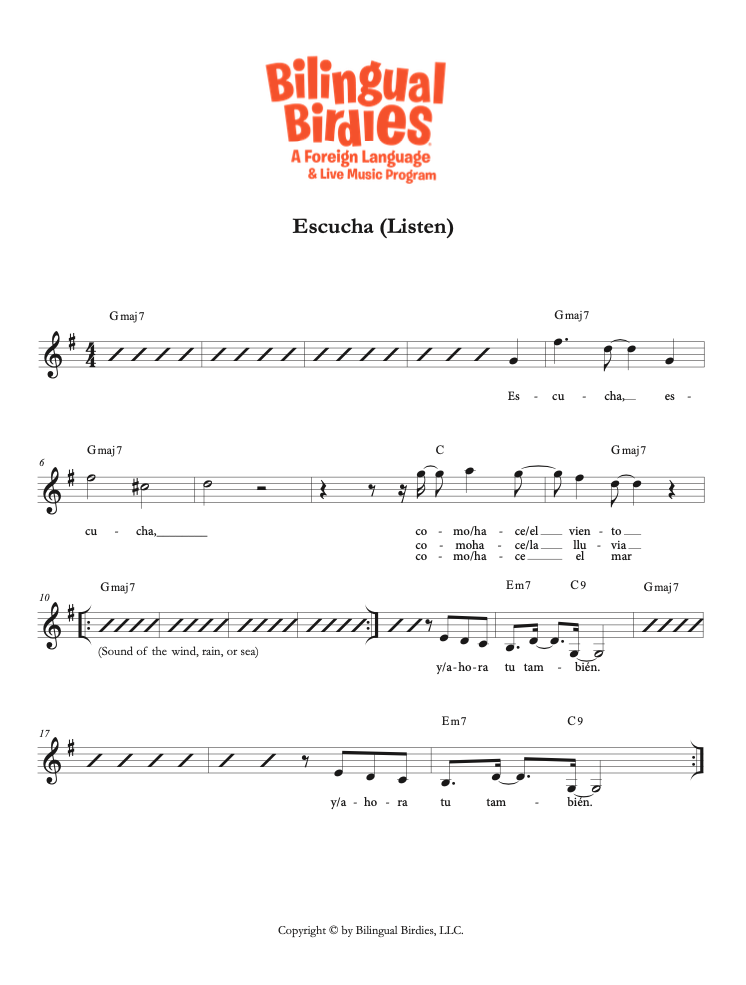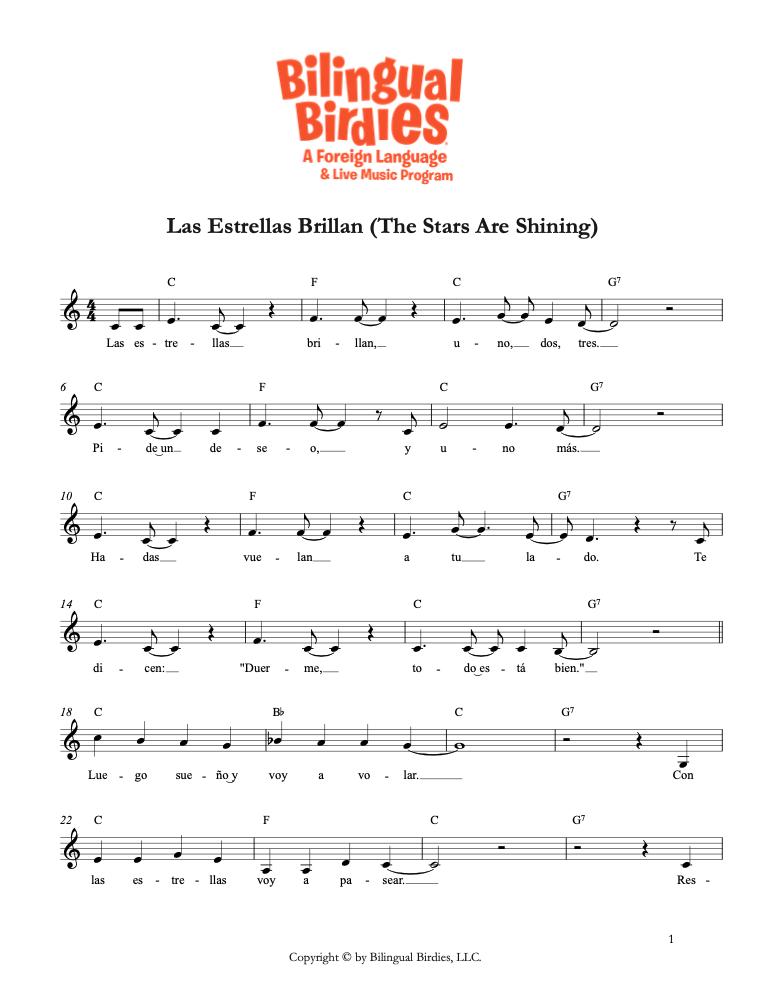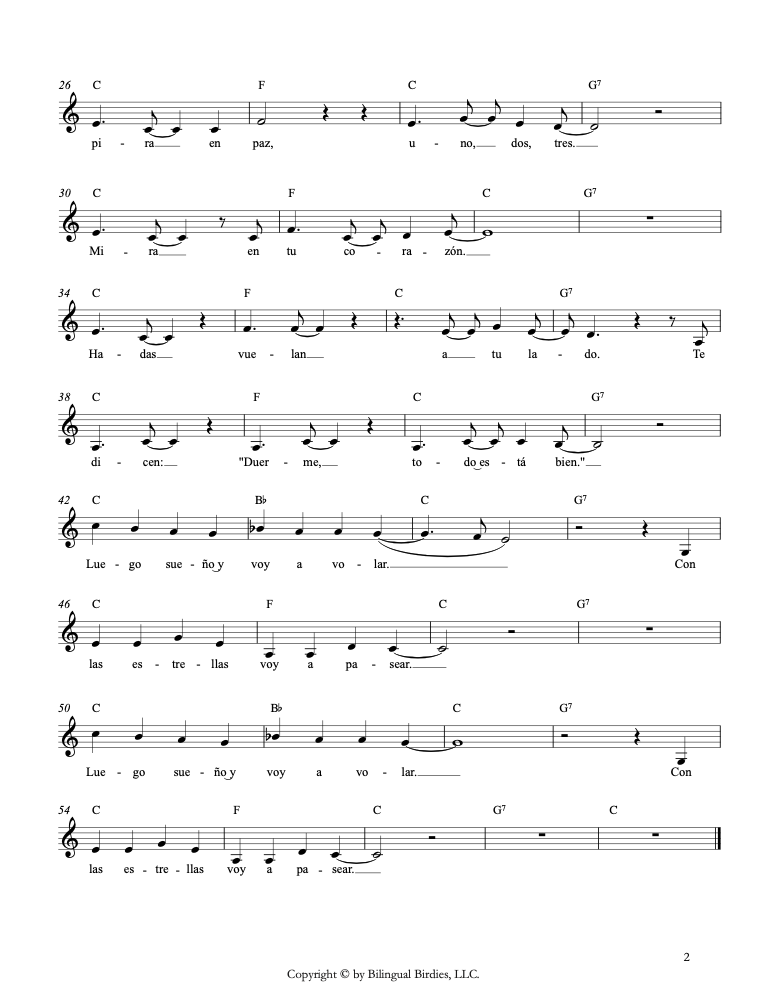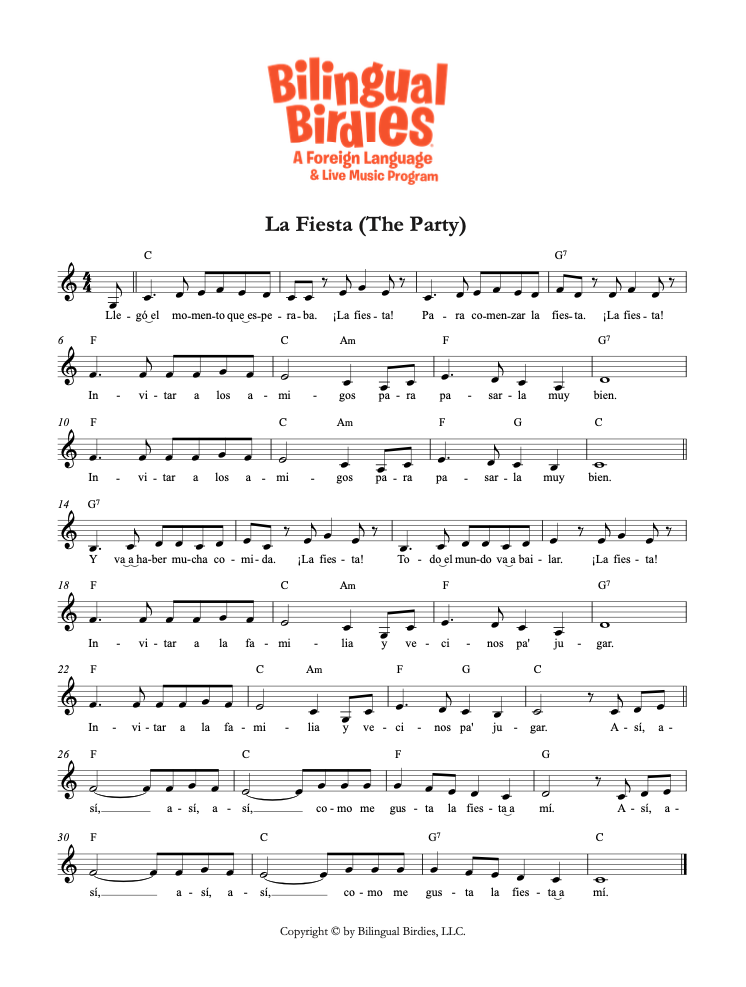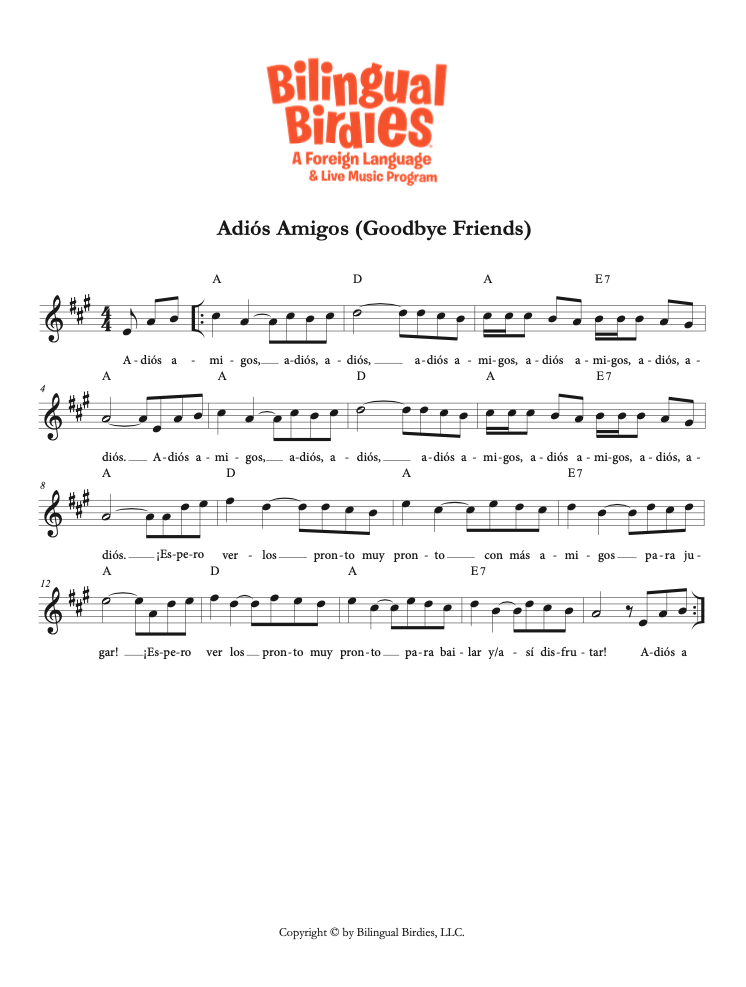A. Hola Wave (Hello Wave)
Keywords: hola (hello)
PREPARE:
- Explain to the class that it’s time to begin.
- Invite the class to sit on the ground in a circle.
- Say, “Friends, today we are going to learn some Spanish”.
- Say, “Let’s start by saying hola” and wave you hand to the children sitting in the circle.
- Translate that hola means hello.
PERFORM
- Invite the class to stretch their arms up into the sky, wave them from side to side
while saying hola three times. - Encourage the class to do this two more times with you.
- Each time you invite them to wave their arms in the air and repeat hola, add a slight
variation such as saying it a little faster, in a higher register in your voice, or making a
funny face.
B. Buenos Días Chant (Good Morning Chant)
Keywords: buenos días (good morning)
PREPARE:
- Be sure that you have a list of everyone’s names inthe class in front of you if you do
not have the names memorized yet. - Say, “¡Buenos días! Good morning! In Spanish, good morning is buenos días”.
- Say to the class, “Ok class, repeat after me, buenos (pause for them to repeat), días
(pause for them to repeat)”. Repeat three times. When you leave space for the
children to respond you should also say the keyword silently as a prompt. - Start patting your lap. Instruct everyone to imitate you patting their laps and wait
until there is a unison rhythm. - Once there is a rhythm instruct the class to repeat after you, “Buen, buen, buen,
buenos días” and pause to let the children respond.
PERFORM
- Chant “Buen, buen, buen, buenos días” two to four times and begin with your
name. Say, “Buenos días (your name), buenos días (your name)”. - If the children are seated in a circle, call a child’s name, followed by the child seated
next to them. - After chanting for three names in the class, modulate your voice up a half step and
repeat “Buen, buen, buen, buenos días” twice before going on to three more
names. - Once all the names have been called, accelerate the rhythm and say, “Ahora
aplaudiendo”. Repeat all names starting with yours, but this time do it clapping.
C. Hola Song (Hello Song)
Keywords: hola (hello), ¿cómo estás? (how are you?), muy bien (very well), gracias
(thank you), cantar (to sing)
PREPARE:
- Begin by passing out shakers and instructing everyone to repeat after you as you say,
“Hola, (hola), ¿cómo estás? (¿cómo estás?), muy bien (muy bien), gracias,
(gracias)”. By the time you return to your seat explain that they have said hello, how
are you, very well, and thank you. - Explain that there will be a part of the song where you ask, “¿Tú estás bien? Are
you well?”, and they should repeat “Bien” by raising up their hands and shaking
their shakers. Translate that bien means well. - Explain that you are doing well too so you will then say, “¡Yo estoy bien!” which means, I
am well. And they should raise their hands again and say “Bien”. - Ask the class, “Who likes to sing? Everyone say, cantar la la la”. Explain that at the
end of the song everyone will sing together in themelody of the song. - Practice singing the la la la’s in the melody of the song.
PERFORM
- Pause for their part and be especially animated when singing it with them.
- Use dynamics to keep the song compelling.
- Cue students for “Muy bien”.
- Teach gracias and encourage children to shout that out at the correct part of the
song.
CHALLENGE
- Challenge kids to be leaders and sing the song for you to follow.
D. Hora de Limpiar (Clean-up Song)
Keywords: limpiar (to clean)
PREPARE:
- Ask one child in the class, “Do you know what time is it?, ¿Sabes qué hora es?”.
- Answer, “¡Es hora de limpiar!”.
- Motion with your hands as if you were collecting toys and putting them into a basket
and say, “Limpiar, limpiar, limpiar” in a fun rhythm. Encourage class to repeat
with you. - Tell the class that when you clean up you like to sing a special song and sing Hora
de Limpiar once for them.
PERFORM
- Sing once with class using instruments.
- Continue singing and begin to place the instruments in a basket or bag.
- Go around with a basket or bag and allow class to put away the instruments.
E. Fresitas (Strawberries)
Keywords: fresitas (strawberries), aquí (here)
PREPARE:
- Ask the class, “Who likes strawberries?”.
- Announce, “Let’s go to the forest, and we’re going to look for strawberries. ¡Vamos
a buscar fresitas!”. - Instruct the class to repeat, “Fresitas, fresitas, fresitas” using the melody from the
song. - Ask the class where can you find fresitas and then answer aquí, aquí y aquí, going
up and down with the parachute each time. Explain, aquí means here. Repeat aquí,
aquí y aquí several times. - Be mindful not to do the aquí, aquí y aquí part too fast because children may run
on top of the parachute and it can cause a distraction. - Encourage the class to run underneath the parachute and pretend that they are the
little strawberries.
PERFORM
- Instruct the class to begin walking around in a circle while stomping their feet while
you begin singing Fresitas. - Cue class to say, aquí by pausing and asking, “¿Dónde están las fresitas? Where
are the strawberries?”. - Use different tempos and dynamics and repeat a few times.
F. Ahora Vamos (Now We Are Going to)
Keywords: aplaudir (to clap), dormir (to sleep), despertar (to wake up)
PREPARE:
- Say, “Now we are going to clap, to sleep and to wake up”.
- Have the kids say with you in a rhythm “Aplaudir, aplaudir, aplaudir”. Aplaudir
means to clap. - To teach dormir, yawn, stretch, snore, and pretend to sleep. Instruct the class to do
the same as you all repeat “A dormir, a dormir, a dormir”. - Have the kids say with you in a rhythm or a fun melody “Despertar, despertar,
despertar”. Despertar means to wake up. - Now, shake your shakers in a very fast motion and say, “Tocar means to play. Shake
your shakers and say, a tocar, a tocar, a tocar. Again!”. Repeat three times. - Instruct everyone to begin by playing their instruments together. Say, “Ok class, let’s
make a rhythm. Now we are going to clap. ¡Ahora vamos a aplaudir! Repeat after
me and say, ¡Ahora vamos a aplaudir!”.
PERFORM
- Cue class when it is their turn to clap aplaudir.
- Slow down and sing softly while you pretend to sleep for a dormir. To add humor,
make a loud snoring sound and gesture sleeping with your eyes closed. - Speed up the tempo and be lively and animated when you sing a despertar. Cue
class by saying, “¡A despertar! Time to wake up!”.
CHALLENGE
- You can use more actions like to dance, to sing, to jump, and more.
G. Escucha (Listen)
Keywords: escucha (listen)
PREPARE:
- Say, “Escucha, shh. In Spanish, escucha means listen.”
- Explain that you’re going to dim the lights and sing a lullaby because it’s time to
listen and calm down. Repeat, “Escucha, shh” three times. - Pass out some scarves for them to use as blankets.
- Say “Shh” and lower your voice as you sit down and prepare to sing for the class, you
can also play the audio Escucha.
PERFORM
- In a soft and gentle tone begin the song.
- At the conclusion of the song softly tell the childrenit’s time to very slowly wake up
on the count of ten. - Count to ten in Spanish in a suspenseful way by strumming the guitar or tapping the
drum in between each number. - When you get to ten, instruct the class to stretch their arms above their head, and
yawn to wake up.
CHALLENGE
- Have the class make the sounds of viento (wind), lluvia (rain) and mar (sea), AFTER the lullaby section.
H. Adiós Amigos (Goodbye Friends)
Keywords: adiós (goodbye), amigos (friends)
PREPARE:
- Instruct everyone to remain standing in order to keep a festive vibe after the dance
party. - Announce, “The time has come to say adiós”. Encourage the class to say adiós
three times while waving their hands. - Say, “Amigos means friends”. Encourage the class to say amigos three times in a
fun way. - Use the melody of the song to sing, “Adiós amigos, adiós, adiós” and encourage
the class to repeat singing that line with you. - Now explain you will teach one more line from the song that is their part which
goes, “¡Adiós amigos, adiós, adiós, adiós amigos, adiós amigos, adios, adios!”.
Encourage the class to repeat with you. - Instruct everyone to begin clapping their hands in a more accelerated rhythm than
usual.
PERFORM
- Begin singing Adiós Amigos.
- Accelerate rhythm using your drum or guitar.
- Sing the song one time through waving, jumping, or snapping.
I. Las Estrellas Brillan (The Stars Are Shining)
PREPARE:
- Explain it’s time to take a nap, tomemos una siesta.
- Say “Shh” three times while putting your finger in front of your mouth.
- Encourage class to say shh with you.
- Turn off one light in the classroom and ask everyone to lay down on the ground and
relax. If scarves are available pass one out to eachchild to use as a blanket.
PERFORM
- Sing or play Las Estrellas Brillan audio.
- Count to ten and use your instrument to make a rhythm after each number.
- Turn on the lights in the room and say, “¡Hora de despertar! It’s time to wake up”.
J. Mi Número Favorito (My Favorite Number)
Keywords: tres (three), maracas (shakers), uvas (grapes), chicos (boys)
PREPARE:
- Use your fingers to count and say, “¡Uno, dos y tres!”. Translate and say, “One, two,
and three”. - Explain, “Mi número favorito es el tres. My favorite number is three. Everyone
count with me (in a fun rhythm). ¡Uno, dos y tres, uno, dos y tres, uno, dos y
tres!”. - Invite them to repeat maracas with a fun melody, explain maracas means shakers.
Sing “Tres maracas en Caracas”. - Invite them to repeat uvas with a fun melody, explain uvas means grapes. Sing “Tres
uvas en Cuba”. - Invite them to repeat chicos with a fun melody, explain chicos means boys. Sing
“Tres chicos en Puerto Rico”. - Explain to the class that you are going to sing about “Tres maracas en Caracas,
tres uvas en Cuba, y tres chicos en Puerto Rico” while they will count to three in Spanish. - Instruct class to start a rhythm with their shakers.
PERFORM
- Sing the song in an animated and lively way and cue by asking, “¿Cuántas
maracas?, ¿Cuántas uvas?, ¿Cuántos chicos?”. - Sing the class’ part with them to encourage participation.
CHALLENGE
- Use new rhymes and encourage class to learn them as well.
K. La Fiesta (The Party)
Keywords: la fiesta (the party)
PREPARE:
- Explain that this is a dancing song. You can say, “We are going to a party. ¡Vamos a
la fiesta!”. - Encourage them to repeat la fiesta with a funny melody or voice.
- Teach three easy dance moves to the class so they can participate in the party. This is
important because sometimes people will not easily dance on their own if they do
not have an easy motion to do. - Instruct the class to stand up with you and begin playing or clapping in a rhythm.
Say, “Let’s make a rhythm”. Clap your hands or make a rhythm with the instruments
and then say, “¡Ahora, vamos a la fiesta!”.
PERFORM
- Sing once with class using instruments.
- Make a conga line. Have the kids line up behind you while you continue playing and
singing the song. Dance around the room in a line and eventually end up where you
started as you finish the song.
CHALLENGE
- Pause before saying la fiesta and have the class sing it each time.
